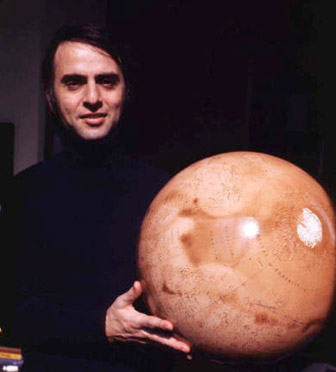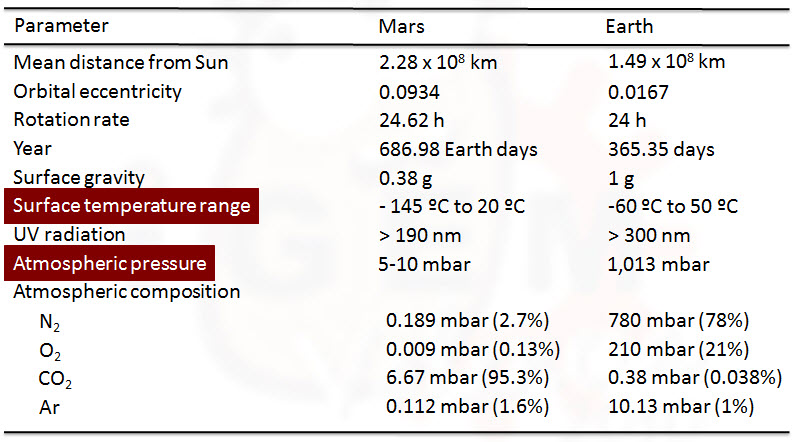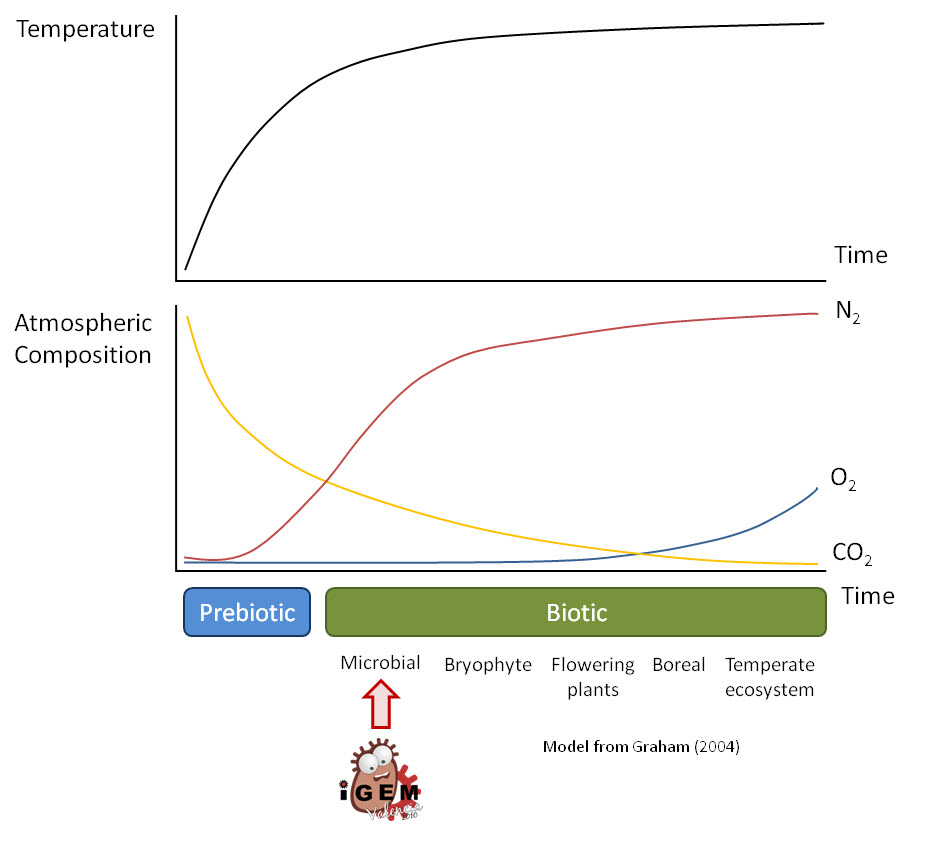Team:Valencia/Terraforming
From 2010.igem.org
Time goes by...
(El tiempo pasa...)
Follow us:

Our main sponsors:

Our institutions:

Visitor location:
» Home » The Project
Terraforming of Mars
Terraforming of a planetary body (planet or moon) or planetary ecosynthesis is the hypothetical process of deliberately modifying its atmosphere composition, temperature, topography, or ecology to be similar to those of Earth to make it habitable for Terran organism, including humans. Terraforming is a common concept in science fiction. In fact, Jack Williamson, a science fiction writer, coined the term in 1942. But the first to use the concept was H.G. Wells in his The War of the Worlds (1898), where the martian invaders start a terraforming-reverse process in order to change our planet for their own benefit. Recent work in fiction exploring this concept includes the wonderful Mars Trilogy by Kim Stanley Robinson that has filled our dreams about the red planet with astonishing details
In the scientific field, the first one who talk about terraforming of Mars was the ever-inspirational planetary astronomer Carl Sagan in The Long Winter Model of Martian Biology: A Speculation (1971) and in Planetary engineering on Mars (1973) both published in Icarus. In [http://www.youtube.com/watch?v=XzVYwyxidDY Blues for the Red Planet], the fifth episode of his mythical television series Cosmos: A personal Voyage, he exposes his ideas to the public. Sagan’s plan for terraforming of Mars implies seeding its polar caps with dark plants. These plants will be artificially selected or genetically modified to resist and “survive” the harsh conditions of Mars climate. The positive point gained with this seeding will be realeasing oxygen and darkening the martian surface, melting down the polar caps and liberating the ancient martian atmosphere trapped in there. This fusion water could be transported to the equator by the construction of a network of channels, similarly to the one Percival Lowell believed an inexistent Martian civilization had constructed. Sagan’s opinion about the ethics of this terraforming process, in the case the planet result not sterile is categorical:
"If there is life on Mars, then I believe we should do nothing to disturb that life. Mars, then, belongs to the Martians, even if they are microbes."
In the last years several review works about the concept of terraforming have appeared in the scientific literature. McKay and Marinova (2001) review the general aspects regarding the planetary ecosynthesis in the red planet and the ethics of that process. Graham (2004) has focused in the biological aspects of the creation of a biosphere on Mars and has delineated the stages of such a process. Finally Beech has written a book Terraforming: The Creation of Habitable Worlds (2009) in which the terraforming process is exhaustively analysed. To delve deeper into this exciting process, we recommend the reading of such works and the survey of the ethics of terraforming that we have written.
Why Mars?
In the actual conditions of Mars there is no organism able to survive and in no way grow. However, increasing evidences are revealing a different and biologically interesting ancient history (McKay, 2010). This early wetter and warmer martian conditions together with its closeness are the primary basis for carry out a planetary ecosynthesis on Mars.
Table 1 compares selected environmental and physical parameters between Mars and our cradle planet. Modifying the physical properties of Mars is impossible with the current technology, but some of these properties are very similar to those of Earth. For example the day length and the obliquity. The major differences as the year and season length, the lower surface sunlight and gravity may be no important obstacles in the creation of a biosphere (McKay and Marinova, 2001). Thus, Mars only will be terratransformed by changing its atmosphere. The idea is creating a new one thicker with a new composition that will lead the heating of the surface by means of a greenhouse effect.
Our project for terraforming Mars
Our ideas for the terraforming of Mars comes from our conviction of the great usefulness of the tools Synthetic Biology provides us in the context of a planetary colonization.
Our project proposes sowing the martian surface with genetically modified yeasts to produce a dark pigment as melanin. This yeast will help to reduce the albedo and then to warm up the martian atmosphere (this will happen in a Mars partially terraformed). The sowing will be done in shallow seas or lakes in the northern plains, craters or impact basins like Hellas.
Melanin synthesis by tyrosinase (EC 1.14.18.1) requires oxygen, we know that, but we propose also a simultaneous sow of oxygen-evolving cyanobacteries, which also will produce the necessary carbohydrates for the heterotrophic yeasts metabolism. The melanin will protect the yeasts against the ultraviolet radiation (Graham, 2004). To increase the yeast survival in a terraforming context, that despite to be partially terraformed will be quite harsh to such microorganisms, we propose the introduction in the yeasts of a LEA protein (see Surviving Mars). This protein provides resistance against different temperature conditions (low and high) and high-salinity stresses (reference need).
In order to make Mars surface suitable for the introduction of our microorganism it would be necessary to implement previously a prebiotic stage aim to modify the pressure and the atmospheric composition to increase the temperature on the surface (McKay and Marinova, 2001). To do that, it has been proposed the manufacturing and releasing of perfluorocarbons (PFCs) from the martian regolith. Another method would be the installation of orbiting mirrors that would increase the amount of sunlight reaching the surface. Both methods would warm up the atmosphere and increase the pressure enough to allow the sowing of microorganism.
The planetary temperature produced by the biological method we propose to change the albedo would be stabilised in a homeostatic way by a simple system that seems the Daisyworld developed by Watson and Lovelock (1983). We called it the Yeastworld.
At the beginnings, the melanic microorganisms which albedo would be lower than the martian bare ground would increase the atmospheric temperature. Nevertheless, as the temperature was increased some albino forms would appear in the microbial populations.
A prion switch, based in Sup35p, a yeast protein that has prion behaviour (hence the necessity to use yeast in our project), would control this phenotypic change (Regulating Mars temperature). This switch would be turn on with high temperatures. In such conditions the albino forms would have a high selective efficacy due to their high albedo that prevents the overheating. In this context the albino forms would tend to be very numerous in the microbial populations increasing the albedo of the surface. Thereby, the planetary temperature would fall to values in which the melanic forms would be favoured with respect to the albino ones due to his higher use of the thermal energy. Again, the melanic forms would start to be more numerous in the populations increasing the temperature.
 "
"



